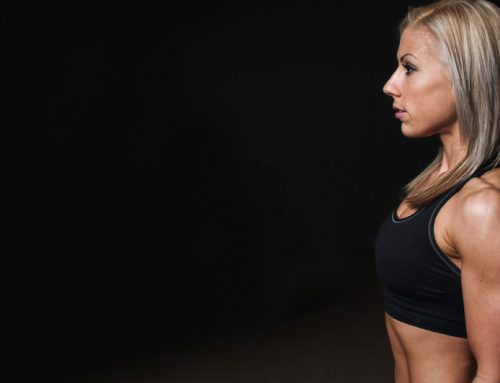Top runners share coaching pearls of wisdom that have led them to greatness.
Their coaches’ names don’t often appear in the headlines, but make no mistake — the best athletes don’t rise to the top on their own. The brains behind those gold medals, national titles and world championships are lurking on the sidelines, stopwatches in hand, inspiration and high-fives at the ready.
It’s not always about injury rehab or splits. Often what coaches impart to their athletes has more to do with integrity, values and beliefs. The best of them have a knack for bringing out the best in us — not just as runners, but also as human beings. They’re the source of humor and tough love. They’re also the masterminds of race strategy, fueling and cross-training plans. They tally the miles, they write the workouts. They ask if you’ve eaten your vegetables. And when the work is done, the race is won or lost, they teach the lessons that help us grow.
“Coach Joe Vigil led me to my life philosophy: If you have it, share it,” says Deena Kastor, 2004 Olympic marathon bronze medalist. “Anything — from a sandwich, money in your pocket or knowledge-through-experience — is not worth having unless you can share it with others. He lives by these words, and I have used this as my sounding board for every decision I make in regard to pursuing my goals and living my life.”
So, in tribute to all those who dedicate themselves to making us stronger, faster, more confident and, let’s face it, smarter runners, RT put a call out to some top athletes in the sport to find out which nuggets of knowledge have made all the difference. Read on to find out what they said.
Dathan Ritzenhein, 2012 U.S. 10,000M Olympian
On his High School coaches, Brad Prins and Mark Nessner:
“They shaped the way I confronted challenges with injuries later in my career. We had so much fun, but we also worked harder than anyone else. We would meet at the pool at 5:30 a.m. for extra cross-training, and they were always trying new methods: sprints, drills, plyometrics, or any other additional training I could do. Now anytime I have an injury, I put my full energy into finding a way to stay fit. It was 15 years ago, but it is something I carry with me every day of training.”
DON’T RUSH – THINGS DONT HAPPEN OVERNIGHT
Meb Keflezighi, 2004 U.S. Olympic Marathon Silver Medalist
On Bob Larsen, his coach for almost 19 years:
“You don’t know what’s ahead, but keep doing the right things and make small progress. Don’t rush — things don’t happen overnight. He always reminds me that if somebody ever said to me at UCLA that I could be a national champion, I wouldn’t have believed them. I wouldn’t have believed I could have an American record. But keep doing the right things over time, and progress comes.”
THE PROGRAM SHOULD FOLLOW THE ATHLETE, NOT THE ATHLETE FOLLOW THE PROGRAM.
Ryan Hall, U.S. Olympic Marathoner
On his father during the early years, and Renato Canova, his former coach:
“‘If it’s not fun, it’s not worth doing it.’ My dad used to always tell me this
[before races] growing up. I used to put an incredible amount of pressure on myself before races and workouts, to the point that I wasn’t enjoying myself anymore. This simple reminder has stuck with me to the start line of two Olympic marathons. It is often the last thing I think before the gun fires. I have to remind myself to not take myself so seriously. This is just sport after all, and the point of sport is to have fun.“Coach Canova says that the program should follow the athlete, it’s not the athlete who should follow the program. This is so huge because runners tend to get so married to a program that if they deviate from it they see that as a failure, when in actuality it is the program that should be adjusting continually for the athlete’s changing day-to-day needs.”
Aaron Braun, 27:41.54 10,000M Runner
On Damon Martin, his coach at Adams State University:
“Run for something greater than yourself! A lot of people consider running to be an individual sport, which in all physical aspects it is. But the mental aspect doesn’t have to be, and Coach Martin and I believe that your performance is enhanced if you go away from the individual aspect of it. The main benefit of thinking this way is late in the race, when your body is screaming at you to just slow down a little. If you’re only running for yourself, you’re likely to accept what your body is asking you to do and back off a bit. If you’re running for something greater than yourself, your brain will tell your body to shut up [and] keep pushing with all you have until you cross that finish line. What is something greater than yourself? You just have to find something you believe in. In college, it was my team. My new teammates are my wife, Annika, and little girl, Makenzie. They count on me to run tough for them, and late in races when I’m tired and want to slow down, I try to think of them. It becomes clear that I am running for something much greater than myself.”
RUNNING IS SIMPLE
Molly Huddle, 5,000M American Record-Holder
On her current coach, Ray Treacy:
“I remember one of the first meetings I had with Ray. He asked, with five years of my old training logs in hand, if there was anything he should know that Tim Connelly, my Notre Dame University coach, hadn’t told him. ‘I can be stubborn,’ I said. He laughed and said he could handle that. I think he has deftly coached some similarly intense athletes by standing back enough to not interrupt their strengths but stepping in enough to prevent them from getting in their own way. He reminds me that running is simple and to mostly leave the worrying to him. That has saved me a lot of energy and let me run fit and free.”
Sara Hall, 2012 USA Cross Country Champion
On Dena Evans, her coach at Stanford University:
“Dena Evans became — and is still to this day — a friend and mentor of mine. She had a unique way of communicating using metaphors that sometimes really brought clarity to the task at hand and sometimes took some thought to figure out, but once you did they stuck with you in a greater way. I remember before cross country season one year she sent the whole team a long email comparing us to ears of corn, the goal being to have no bad kernels.”
Kate Grace, 2013 USA 1 Mile Road Champion
On Mark Young, her coach at Yale University:
“Before a race, don’t be afraid to get moving. My college coach would insist on top-quality strides before a race — very fast and longer than my inclination, at least 100m, around 15 minutes from the gun. My impulse is to save every drop of energy for the race, but that meant my body was still warming up in the first 200m and wasn’t as efficient. I learned to not fear a real warm-up.”
EVEN PACE IS NOT EVEN EFFORT
Matt Tegenkamp, 2012 U.S. 10,000M Olympian
On Jerry Schumacher, his current coach:
“Even pace is not even effort. This applies more to cross country and road racing than the track. During an uphill or muddy patch, you are going to have to grind with an increase in effort, but on the downhill try to float and let the terrain do some work for you. The focus is to work on this concept in training and practice so it becomes second nature within a race setting.”
Sage Canaday, Ultrarunner
On his coach at Cornell University, Robert Johnson:
“Run your longer tempo runs at an ‘effortless effort’ pace. Most runners go too hard and push too fast during tempo runs. He always told us to slow down, run relaxed and negative split the workout depending on how we felt on the day. It is always better to be on the conservative side of dialing into lactate threshold intensity, and you have to be patient.”
anet Cherobon-Bawcom, 2012 U.S. 10,000 Olympian
On Steve Guymon, her coach at Harding University, and Jack Daniels, her current coach:
“They both taught me the importance of learning how to read my workouts so that I’ll know what to expect on race day. In college, because I was making great progress, I couldn’t rely on prior race results to tell me what to expect in my next race. Coach Guymon didn’t care that my PR for the 5,000m might have been 17:30. If the workouts indicated I was ready to run a 1-minute PR, he helped me have faith in that possibility.
“When I started working with Jack Daniels, he continued this type of coaching. When I was training for the Olympic trials marathon, he helped me understand that we weren’t crazy to be talking about trying to PR by 8 or 9 minutes. Instead of seeing myself as someone with a PR of 2:37, I went into the race believing that my workouts pointed to a good chance of running under 2:30, and sure enough, that happened. I might have been tempted to say, ‘But I’m only a 2:37 runner; let’s shoot for 2:32,’ or I might have decided to go faster than my workouts suggested I should — and I could’ve crashed and burned. I chose to run an informed race, and it worked out great.
“When I ran the 2012 Payton Jordan 10,000m, my workouts suggested that I might be ready to run under 32:00 — even though my PR was 30 seconds slower than that. I went out around 31:45 effort, felt good, and picked it up a little to run 31:33, which landed me on the Olympic team. Once again, that idea that my coaches preached to me paid off.”






